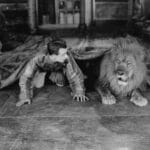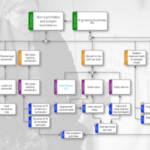Dashboard design – lessons from Britains ‘lost bomber’
Part of being a geek includes dragging your family round aircraft museums. Wandering round the Imperial War Museum in Duxford last week I came across an impressive looking failure – the TSR2. Britain, like many wealthy countries, has a long and grizzly history of defence projects going wrong.
The TSR2 was envisioned initially as a small, fast, strike-fighter. It had a torrid history, carefully documented by Damien Burke on his web site Thunder and Lightening. Here is Damien’s description of the design process they went through for the cockpit…
The Ministry’s interference extended into the design and manufacture of the aircraft itself; they took charge of the cockpit layout, and often had three hour meetings to decide the location of a single switch (and often got it wrong). Compare that arrangement with the Vulcan cockpit design, where the chief test pilot, Roly Falk, fought for and got permission to design the cockpit himself; after all, who better to decide the layout than a pilot?
It sounds comical that you would not involve a pilot in the design process for a cockpit. Yet this is exactly what I see happen in organisations every single day. Dashboards and reports are often designed by well-meaning management information and IT teams without the proper engagement of their end-users. They often spend hours on dashboard design, trying to guess where the executive would like a graph, or what they want to see reported. The teams designing the dashboards and reports are not wholly to blame here, I have seen how hard it can be to get an uninterrupted block of time with senior managers to properly review and discuss the content and layout of the dashboards and reports. And yet these are the documents they (should) use for critical business decision making.
And the TSR2? After nine years of development it was cancelled on April 6th 1965.






